Thursday, August 3
Nuclear Powered Spaceships
The space race has been revived, but this time, the goal post has been shifted much further – to Mars. As recent technological advancements promise to open new horizons of exploration, NASA plans to cut the travel time to Mars with a nuclear powered spacecraft.
A trip to Mars currently takes approximately seven months, covering a staggering 300-million-mile journey. NASA, in collaboration with the US Defense Advanced Research Projects Agency (DARPA), now proposes an ambitious plan that hinges on the promise of nuclear thermal propulsion technology to reduce this duration significantly.
NASA aims to launch a nuclear-powered spacecraft, known as DRACO (Demonstration Rocket for Agile Cislunar Operations), into Earth’s orbit either by late 2025 or early 2026. The spacecraft, under construction by Lockheed Martin, a leading aerospace and defense company, will serve as a testbed for this groundbreaking technology.
NASA administrator Bill Nelson said that this technology “would allow humans to travel in deep space at record speed.” However, it remains unclear by how much the nuclear thermal propulsion technology can decrease the travel time.
DRACO is expected to provide a treasure trove of critical data that will usher in a new age of space exploration.
“We’re going to put this together, we’re going to fly this demonstration, gather a bunch of great data and really, we believe, usher in a new age for the United States [and] for humankind, to support our space exploration mission,” said Kirk Shireman, vice president of Lockheed Martin Lunar Exploration Campaigns.
Groundbreaking technology
A nuclear thermal rocket (NTR), the underpinning technology of the DRACO, boasts a thrust-to-weight ratio approximately 10,000 times greater than electric propulsion and two-to-five times more efficiency than in-space chemical propulsion.
The technology utilizes heat from a nuclear powered fission reactor to heat a hydrogen propellant, which then expands through a nozzle to provide thrust, propelling the spacecraft forward.
Apart from speeding up transit, the NTR propulsion system also promises increased safety for astronauts. Reduced travel duration translates into a decreased risk of exposure to deep-space radiation and a smaller logistical footprint due to the lesser quantity of supplies required for the trip. “If we have swifter trips for humans, they are safer trips,” said NASA deputy administrator and former astronaut Pam Melroy. READ MORE...
Variation
Variation refers to the differences or deviations from the recognized norm or standard. It may be a modification in structure, form or function in an organism, deviating from other organisms of the same species or group.
- How we perform a task
- The materials we use to perform that task
- The methodology we use to perform that task
- The machines we use to perform that task
- The temperature at which we perform that task
- Our own mental attitude while performing that task
- Did we leave the house at the exact same time we did the day before? down to the minute or second?
- Did we drive the same vehicle we drove yesterday?
- Did we drive at the same speed we did yesterday? For the entire route?
- Did we take the exact same route as the day before?
- Did we stop or coffee or gasoline?
- Did we drive in the same traffic as the day before or was it lighter or heavier?
- Were there any unexpected accidents in our way?
- Was there any construction in our way?
- When did we start counting our time we left home?
- When we walked out the door?
- Got into the car?
- Backed completely out of the driveway?
- When did we stop counting our time when we got to work?
- Did we use the same device to measure time each day?
- Had that device been calibrated for accuracy.
- Did we listen to the radio?
- How many stop lights did we have to stop at?
- Was that the same number of stop lights as yesterday?
- Was the length of the stop light the same each day?
- Did we stop on the same number of yellow lights that we did yesterday?
- Were the same songs on the radio playing today as yesterday.
Coffee Has Unique Cognitive Benefits
Scientists testing coffee against plain caffeine found that plain caffeine only partially reproduces the effects of drinking a cup of coffee, activating areas of the brain that make you feel more alert but not the areas of the brain that affect working memory and goal-directed behavior.
For many people, the day doesn’t start until their coffee mug is empty. Coffee is often thought to make you feel more alert, so people drink it to wake themselves up and improve their efficiency. Portuguese scientists studied coffee-drinkers to understand whether that wakefulness effect is dependent on the properties of caffeine, or whether it’s about the experience of drinking coffee.
“There is a common expectation that coffee increases alertness and psychomotor functioning,” said Prof Nuno Sousa of the University of Minho, corresponding author of the study in Frontiers in Behavioral Neuroscience and Field Chief Editor of the journal. “When you get to understand better the mechanisms underlying a biological phenomenon, you open pathways for exploring the factors that may modulate it and even the potential benefits of that mechanism.”
A caffeine kickstart
The scientists recruited people who drank a minimum of one cup of coffee per day and asked them to refrain from eating or drinking caffeinated beverages for at least three hours before the study. They interviewed the participants to collect sociodemographic data, and then did two brief functional MRI scans: one before and one 30 minutes after either taking caffeine or drinking a standardized cup of coffee. During the functional MRI scans, the participants were asked to relax and let their minds wander.
Because of the known neurochemical effects of drinking coffee, the scientists expected that the functional MRI scans would show that the people who drank coffee had higher integration of networks that are linked to the prefrontal cortex, associated with executive memory, and the default mode network, involved in introspection and self-reflection processes. They found that the connectivity of the default mode network was decreased both after drinking coffee and after taking caffeine, which indicates that consuming either caffeine or coffee made people more prepared to move from resting to working on tasks. READ MORE...
Wednesday, August 2
Pentagon's Secretive Tech Agency
n 1957, the Soviet Union changed the night sky. Sputnik, the first satellite, was in orbit for just 22 days, but its arrival brought a tremendous set of new implications for nations down on Earth, especially the United States. The USSR was ahead in orbit, and the rocket that launched Sputnik meant that the USSR would likely be able to launch atomic or thermonuclear warheads through space and back down to nations below.
In the defense policy of the United States, Sputnik became an example of “technological surprise,” or when a rival country demonstrates a new and startling tool. To ensure that the United States is always the nation making the surprises, rather than being surprised, in 1958 president Dwight D. Eisenhower created what we now know as DARPA, the Defense Advanced Research Projects Agency.
Originally called the Advanced Research Projects Agency, or ARPA, ARPA/DARPA has had a tremendous impact on technological development, both for the US military and well beyond it. (Its name became DARPA in 1972, then ARPA again from 1993 to 1996, and it’s been DARPA ever since.)
Other projects include the more explicitly military ones, like work on what became the MQ-1 Predator drone, and endeavors that exist in the space between the civilian and military world, like research into self-driving cars.
The specific military services have offices that can conduct their own research, designed to bring service-specific technological improvements. Some of these are the Office of Naval Research, the Air Force Research Laboratory, and the Army’s Combat Capabilities Development Command (DEVCOM). DARPA’s mission, from its founding, is to tackle research and development of technologies that do not fall cleanly into any of the services, that are considered worth pursuing on their own merits, and that may end up in the hands of the services later.
How did DARPA start?
Sputnik is foundational to the story of DARPA and ARPA. It’s the event that motivated President Eisenhower to create the agency by executive order. Missiles and rockets at the time were not new, but they were largely secret. During World War II, Nazi Germany had launched rockets carrying explosives against the United Kingdom. These V-2 rockets, complete with some of the engineers who designed and built them, were captured by the United States and the USSR, and each country set to work developing weapons programs from this knowledge.
Rockets on their own are a devastatingly effective way to attack another country, because they can travel beyond the front lines and hit military targets, like ammunition depots, or civilian targets, like neighborhoods and churches, causing disruption and terror and devastation beyond the front lines. What so frightened the United States about Sputnik was that, instead of a rocket that could travel hundred of miles within Earth’s atmosphere, this was a rocket that could go into space, demonstrating that the USSR had a rocket that could serve as the basis for an Intercontinental Ballistic Missile, or ICBM. READ MORE...
We Done Downsized
Both my wife and I have back problems and being on one level is really what we need to do as these problems are likely to get worse before they get better, if that ever happens.
Our neighbors seem more friendly as well which makes a big difference. One of our neighbors treats us like they have known us for years. They are about our same age and seem to share our same values.
We are not completely settled yet as there are just a few things left to do. All the repairs and upgrades have been accomplished, and we closed on our other house yesterday. There are a few things left in the garage to organize and the same basement area needs to have the same thing done which I am in no hurry to do... it is my responsibility.
One of the first things that we did was remove all the flooring and install vinyl in the bathrooms and laundry room and laminate in all the other rooms. We had installed hardwood floors in our other house, but they are very expensive now. Laminate is a reasonable substitute.
We squared up the deck (making it visually bigger) and had a new staircase build that had a small incline/decline. It looks much bigger when it really isn't. Once the new wood has weathered, we will pressure wash and stain it.
Our color scheme in the new house is different (my wife's idea) but it gives us the impression we are living in a totally new and different house. We have new appliances, new furniture, and a new dining room table and chairs. We sold all our old household furnishings.
Right now, our sunroom is TOO HOT in the summer and will probably be TOO COLD in the winter, so we mount a small heating/air unit on the wall to take care of that problem. The previous owners only had one outlet installed when the room was built, so we have an electrician put another one in for us.
Our original plan was not to do this for another 5 years, but all of a sudden when the perfect house came on the market for sale, we decided to take the plunge and initiate our plans earlier.
Ancient Kings of which You Never Heard
We remember the titans of the ancient world because of their legendary accomplishments; Alexander conquered Persia, Julius Caesar crossed the Rubicon, Boudicca fought the invaders. Their names live on through the ages. Yet their contemporaries had stories worth telling, too: rulers of the ancient world whose stories were powerful and compelling, yet almost forgotten.
1. Mursili of the Hittites (1620–1590 BCE)
Hattusa was the ancient capital of the Hittite Empire. Its ruins lie in present-day Turkey. Today, the drive from Hattusa to Babylon would take you about 20 hours in a Toyota, provided you didn’t mind crossing over some fairly strife-ridden territory. For Mursili I, king of the Hittites, the roughly 1050-mile march would have taken much longer (especially because he stopped to conquer the city of Aleppo on the way).
Mursili’s sack of Babylon was an impressive feat. It brought down the famed descendants of Hammurabi and guaranteed Mursili’s legacy among the people of Babylon. Unfortunately, it wasn’t really a fruitful conquest for Mursili himself. Babylon was too far away for the Hittites to actually rule, and the glamor of the conquest did little to boost Mursili’s support at home.
2. Wu Yi of the Shang (1147–1114 BCE)
In the long recorded arc of Chinese history, the Xia dynasty comes first. The Xia may have truly existed, or they may have been mythical; history isn’t quite sure. But the second great Chinese dynasty was almost certainly real, as was one of its more colorful emperors. Emperor Wu Yi of the Shang Dynasty reigned (probably) from 1147 to 1112 BCE. Wu Yi wanted to move China away from a theocratic form of government and toward a more monarchical ruling structure.
Unfortunately, his methods for achieving this were perceived as a bit mad. Wu Yi tried to show his power over the Heavenly Spirit by beating it in fake games. Most notoriously, he had a leather pouch crafted and filled up with blood. Then, he strung the object up high, and in a particularly blasphemous form of pre-modern skeet shooting, shot arrows at it.
Tuesday, August 1
East TN Bar B Q
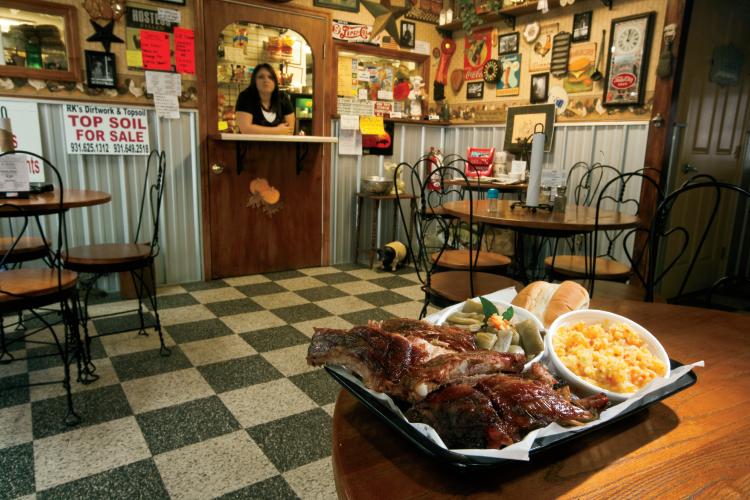
Larry’s Bar-B-Q at the Wagon in Decherd
Known for its mustard slaw, this restaurant off of I-24 near Winchester, sandwiched between a Shell station and a strip mall, is a cross between a country barbecue joint and a cozy café. Read More >>
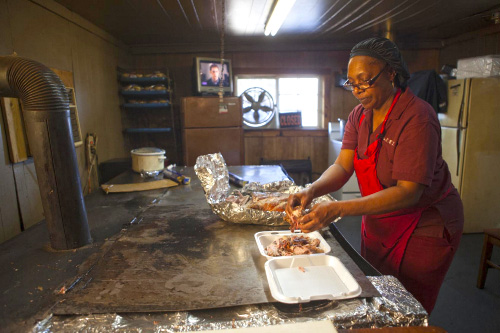
Helen’s Bar-B-Q in Brownsville
We love the pulled pork, Polish sausage and ribs at this small West Tennessee BBQ joint, but don’t take our word for it. Pitmaster (mistress?) Helen Turner has been crowned the first-ever Queen of Barbecue by the Southern Foodways Alliance. Read More >>
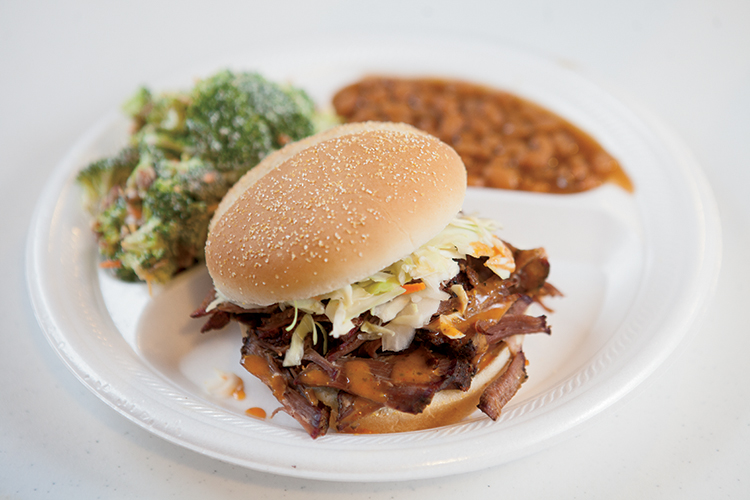
Corner Pit BBQ in Bryson
This family-owned barbecue joint in rural Giles County has been around since the 1960s, and the same vinegar-based sauce has been passed from owner to owner. The current pitmasters use a wood-smoking pit to cook the pork and added a spicy tomato-based sauce to the menu, along with farm-to-table burgers made using beef raised on their farm just a mile down the road. Read More >>
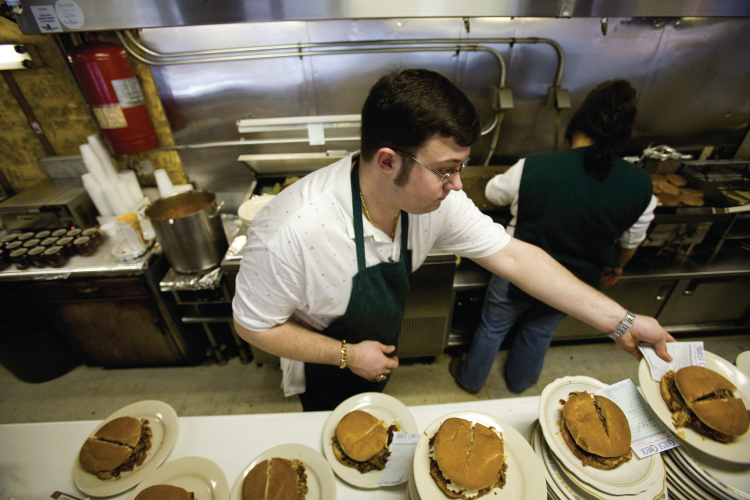
Ridgewood BBQ in Bluff City
Foodies come from miles around to enjoy one-of-a-kind barbecue from a family that cares about maintaining the restaurant’s original charm. Ridgewood’s signature BBQ dish is pit-cooked with a heavy-smoked taste, then sliced thin and piled on platters or massive sandwiches with a tangy sauce. Read More >>

Photo via Bozo’s Hot Pit Bar-B-Q on Facebook
Bozo’s Hot Pit Bar-B-Q in Mason
Located on Highway 70 between Memphis and Brownsville, Bozo’s is the place to go for tender, juicy ribs on Friday or Saturday nights, with sweet slaw and baked beans on the side. Read More >>
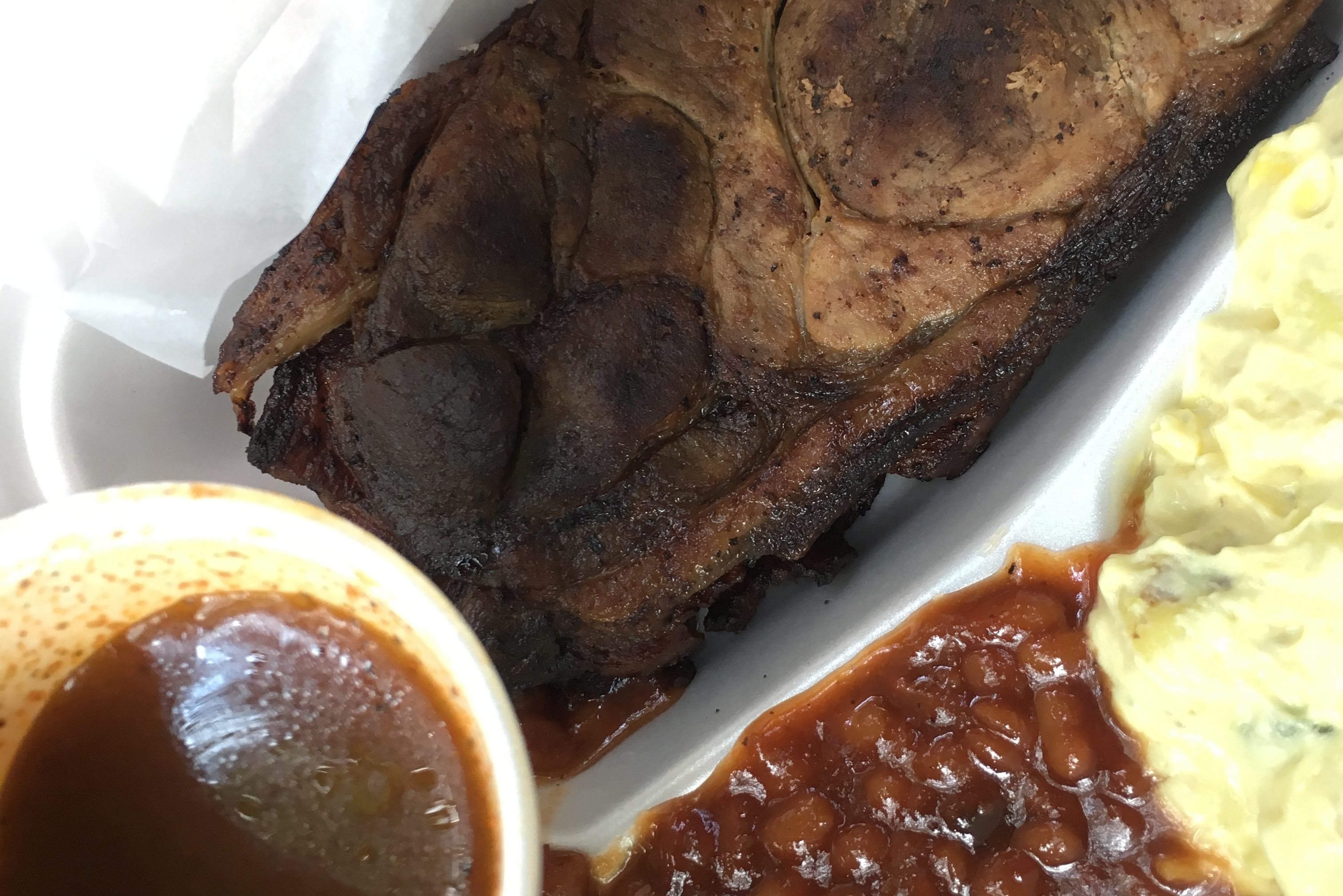
Big Ed’s BBQ in Red Boiling Springs and Lafayette
With two locations in Macon County, Big Ed’s smokes its pork to perfection. Order the shoulder sandwich, but you should probably ask for the “dip” – hot, vinegar-based pepper sauce only available in the small northern Middle Tennessee and southern Kentucky region – on the side.
Is your favorite barbecue restaurant not on the list? Let us know in the comments which BBQ hot spot we should hit up next!
Rain Panels
In a potentially game-changing breakthrough in energy harvesting, researchers have found a way to capture, store and utilize the electrical power generated by falling raindrops, which may lead to the development of rooftop, power-generating rain panels.
Previous attempts to generate power from failing rain have run into specific technical hurdles that often seemed impossible to surpass, but the researchers behind this new method say they have found a solution that may finally make such rain panels as popular, if not more so, than solar panels.
RAIN PANELS SUFFER FROM TECHNICAL LIMITATIONS
Engineers have long known about the potential power generation capabilities of fallen raindrops. The idea is already in practical applications like hydroelectric dams and wave power collection systems, where the movement of the water generates electricity.
However, the efforts to collect energy from falling raindrops have faced a technical hurdle that has made the concept inefficient and impractical. By using something called a triboelectric nanogenerator (TENG), engineers can collect the tiny but measurable amount of electricity generated by a falling raindrop, but as one might expect, the amount of power per raindrop is incredibly small. READ MORE...
Our Presidential Choices
While Biden has royally screwed up our economy by waging war on petroleum crude oil and opened our borders to illegal immigration, Trump's policies did create the strongest economy that the USA has ever seen. However, he could not keep his mouth shut and the Dems HATED HIM and I would not want to see another four years of them and the media attacking him.
So, who does that leave?
For the Democrats: RFK Jr and Govenor Newsom
For the Republicans: DeSantis and maybe Tim Scott
I don't want to vote for ANY OF THEM... but the lesser of the evils is DeSantis... and the reason he would be my pick is that he would:
CLOSE THE BORDER
REDUCE CORPORATE TAXES
OPEN UP THE OIL FIELDS
Personally, I don't give a crap about whether or not we go green, although I think going green could be a viable energy option but we need to approach the transition more slowly.
Currently, we do not have the electric infrastructure to support an electric economy. Our electric grids are too vulnerable to attack.
WHEN THE POWER GOES DOWN, WHAT'S THE BACK UP PLAN?














